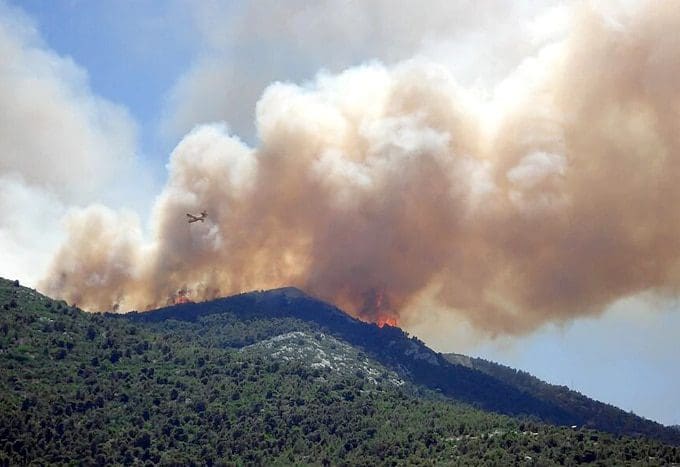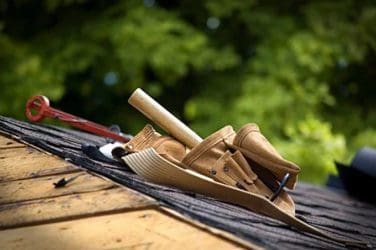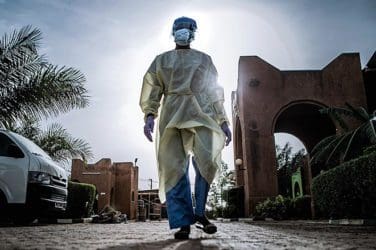words Alexa Wang

Many areas in the United States and Canada are ravaged by wildfires every year, especially from August to November. But 2020 was particularly bad for California as well as the entire United States. According to the reports of NIFC, 52,113 wildfires in 2020 all over Northern America burned 8,889,297 acres of jungles.
The area is almost double of that burned in 2019. But the conditions could have been worse had it not been for an established network of weather forecasting technologies such as weather stations, satellites, and meteorological information.
The data gathered from these sources get processed by companies like ClimaCell to help firefighters and other individuals predict the spread of wildfires and make plans to counter them. These weather forecasting technologies are the same that power ClimaCell’s weather site and smartphone application.
These technologies help the firemen and other authorities carry out the necessary evacuations swiftly and smoothly. But before we start discussing how these technologies help out, let us first understand how weather conditions can impact wildfires.
Weather Can Influence Wildfires
Most people assume that hot weather is responsible alone for wildfires. However, factors like humidity and wind are more responsible than temperature to create the ideal conditions for the spread of wildfire.
Humidity starts to fall from August onwards, which dries up the leaves and branches, making them more susceptible to catch fire. Wind patterns can influence the direction and intensity of wildfires. The wind blows the glowing embers towards other areas and helps the fire spread out of control.
On the other hand, precipitation can increase humidity as well as dampen the forest surfaces, which can slow down or stop the fire. But storms can also be responsible for starting wildfires. The devastating wildfires in Northern California had been started by a series of lightning storms in 2020.
Weather Forecasting Technologies Help in Fighting Wildfires
In the earlier days, firefighting teams had to rely on assumptions based on the landscape and future weather of an area affected by the fire. Wildfires can become so large and intense that they can create their own firestorms, tornadoes, or ash clouds.
That is where weather data can be of a lot of help. Authorities can use the data to keep the fire crews safe and plan firefighting operations accordingly. ClimaCell weather data is derived from the Internet of Things, which facilitates predictions for micro-locations within areas affected by wildfires.
That means they can get ground-level details about vegetation and moisture merged with weather stations and satellite data. It helps firefighters predict the place where the fire will become weaker so that they can find ways to cut it off.
They can plan the ideal location to dig a control line and attack the fire. Details about the wind speed and direction are also necessary for planning aerial attacks or other strategies to suppress the wildfire.
Modern weather technologies are not only helpful in countering wildfire but also predicting the possibility of an outbreak. Officials can monitor the conditions to establish or reinforce measures to prevent a wildfire before it starts.
For example, the weather situation could be ideal for a wildfire in a particular location, and there might be a lightning storm headed that way. So authorities can take aerial measures to dampen the area, which can prevent bushfire.
How Does Weather Technology Help Fight Wildfires?
As we mentioned before, firefighters and authorities can use live weather data feed and meteorological information to manage wildfires more effectively. They obtain the data through whether API providers like ClimaCell to gather accurate micro weather details for any geographical location.
The API providers also have a fire index, which is extremely useful for fighting wildfires. Authorities have to obtain an API key for secure authentication and data download. After that, they can enter the geo-coordinates for any target location in the world to monitor all parameters related to weather conditions that can start or affect wildfires.
Some of these parameters are temperature, humidity, wind details, precipitation details, dew point, and many others. The number of parameters is limitless, so experts have to ensure that they include the most significant factors.
Once the authorities receive the data, they can pass on the details to firefighters, who will be able to predict the wildfire behavior and make better decisions to contain or suppress it. The fire index data is also beneficial to predict wildfire risks for particular areas and forecast wildfire hotspots to take necessary precautions.
Weather forecasts have always been necessary for fighting wildfires. But modern-day weather technologies have proved instrumental to battle wildfires intelligently and efficiently. The data has also been beneficial to predict wildfire locations so authorities and firefighters can take adequate preventive measures.
We hope in the future, firefighters will be able to monitor a simulation of the wildfire’s path before they get to the field. It will help them draw better strategies to manage and extinguish the fire.









